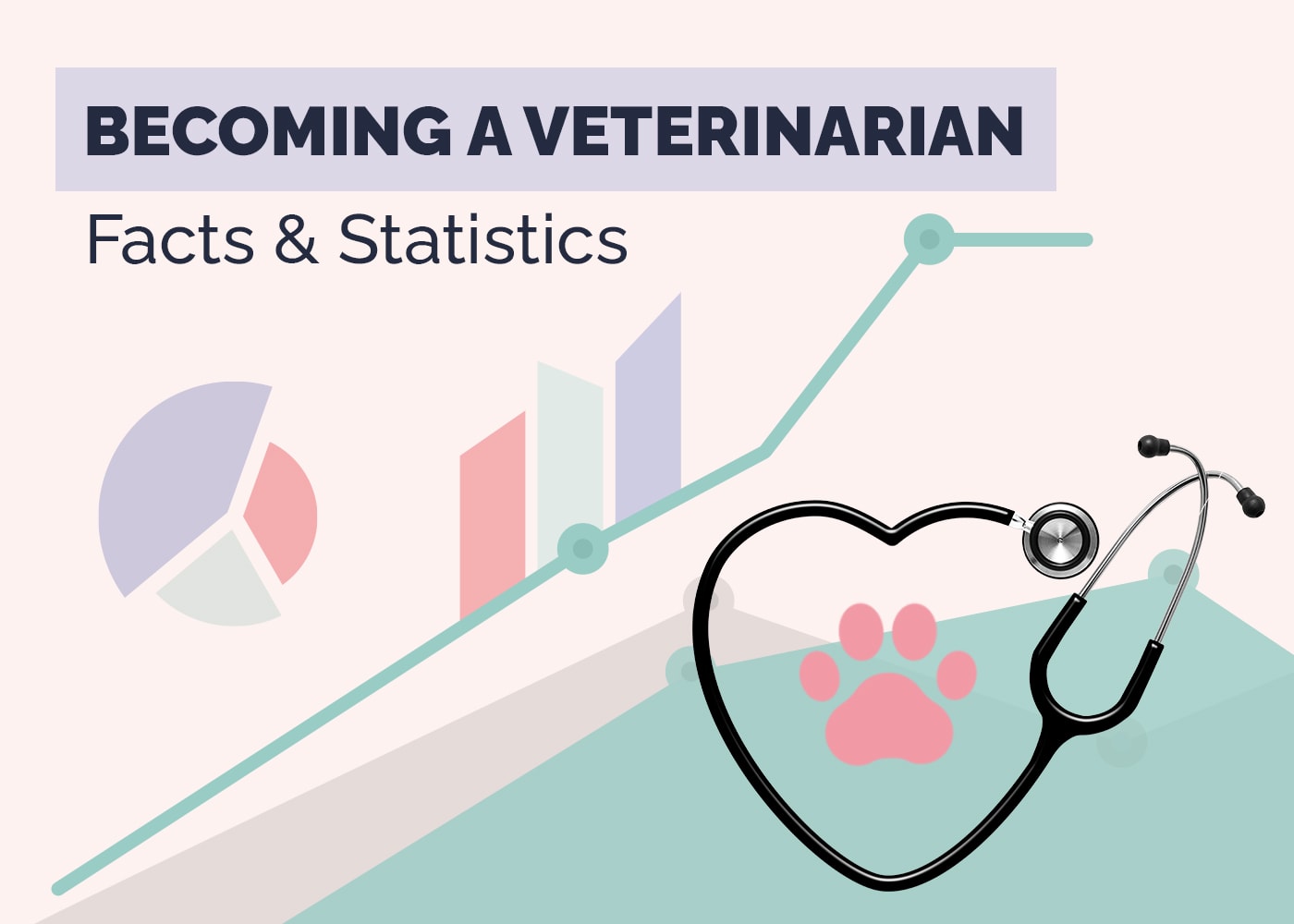How Much is Veterinary School? 17 Surprising Statistics: 2024 Update
Updated on

Note: This article’s statistics come from third-party sources and do not represent the opinions of this website.
Click to Skip Ahead
It’s not uncommon for young animal lovers to dream of becoming a veterinarian, and while many people’s dreams change as they age, some people do go on to become vets. Unfortunately, cost can be a huge mitigating factor that keeps many people from pursuing their dreams of becoming a veterinarian. Veterinarian schools can range from $6,000–$42,000 annually. Becoming a vet requires an advanced degree and years of training, on top of being a major monetary investment.
The 17 Veterinary School Statistics
- Vet schools in the US range from $6,000–$42,000 annually.
- The average cost of a vet school program in the US is $15,000–$18,000.
- The total cost of a vet school program in the US is $24,000–$250,000.
- The application fee from the AAVMC to apply to four veterinary schools is $599.
- The cost of a veterinary degree at the University of Georgia is $78,813, one of the most affordable in the United States.
- The most expensive vet school for in-state students in the US is the University of California, Davis, while the least expensive is Purdue University.
- The most expensive vet school for out-of-state students in the US is Midwestern University, while the least expensive is North Carolina State University.
- On average, vets make $60,000 per year as new graduates and $90,000 as established vets.
- The highest-paying city in the US for veterinarians is San Mateo, CA, at $127,439 annually.
- At $207,454 annually, a Locum Tenens relief veterinarian position earns the most money among vets.
- In 2019, 82% of all veterinarian students took out student loans to afford their schooling.
- Most vet school graduates pay off their student loans in 20 to 25 years.
- In 2021, 10,834 qualified applications were received by US vet schools.
- In 2021, vet school applicants applied to an average of 5.37 vet schools.
- In total, most veterinary students spend 8–10 years pursuing higher education before becoming a veterinarian.
- Approximately 50% of all undergraduates who apply to an accredited veterinary program are accepted.
- Annually, approximately 3,200 people graduate from veterinary doctorate programs.

The Cost of US Vet Schools
1. In the US, vet schools range from $6,000–$42,000 per year.
(Cost Evaluation)
The range of vet school costs in the US is vast, with some schools costing as little as $6,000 annually and others costing around $42,000 annually. This cost refers specifically to the cost of a veterinary doctorate program and doesn’t account for the cost of undergraduate programs.
2. The average cost of vet school in the US is $15,000–$18,000 annually.
(Cost Evaluation)
While the range of vet school costs is wide, the average cost falls between $15,000 and $18,000 every year for a veterinary doctorate program. In many cases, this average doesn’t include the cost of textbooks, and may not include the cost of campus housing.
3. In the US, vet school can cost a total of anywhere from $24,000 to $250,000.
(Cost Evaluation)
On average, most students will spend 4–6 years in vet school, with most schools requiring at least 6 years of schooling. This means that some veterinary programs may cost as little as $24,000 or as much as $250,000 from start to finish, without considering the cost of undergraduate studies. In general, attending a state school in your state of residency will cost the least, while attending a private school will cost the most.
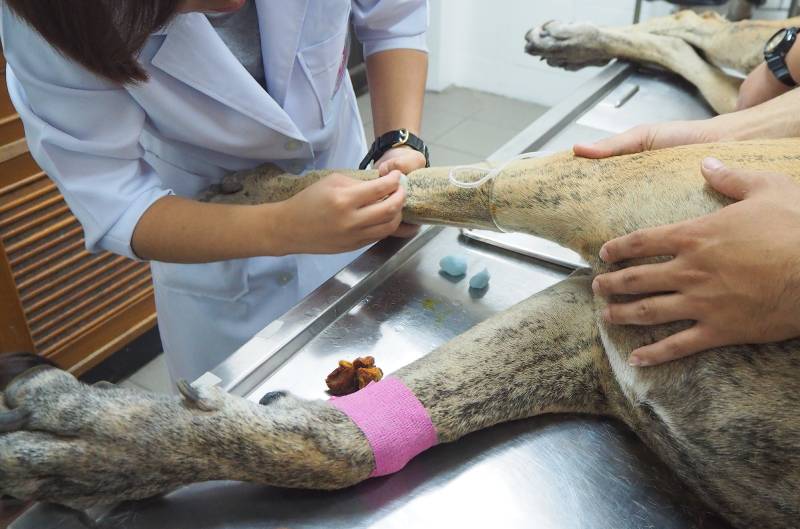
4. The application fee from the AAVMC to apply to 4 veterinary schools is $599.
(Inspira Advantage)
Applying to a veterinary school, like any other university or college, means applying and paying a fee. Most veterinary schools follow the guidelines of the American Association of Veterinary Medical Colleges (AAVMC). The AAVMC uses a system whereby you pay a fee based on the number of vet colleges you apply to. Most prospective vet students apply to four schools, which would cost $599.
5. The cost of a veterinary degree at the University of Georgia is $78,813, one of the most affordable in the United States.
(Inspira Advantage)
As mentioned earlier, the cost of a 4-year veterinary degree ranges significantly. One of the cheapest universities with a 4-year veterinary degree (for in-state students) is the University of Georgia. (UGA). As an in-state student, you will pay just under $79,000 for your 4-year veterinary degree. You should note, however, that out-of-state students pay more than double that tuition.
6. The most expensive US vet school for in-state students is the University of California, Davis, while the least expensive is Purdue University.
(Nerd Wallet)
For California residents, the University of California, Davis veterinary program costs around $247,455. For in-state students within Indiana, Purdue University costs around $146,815. These program costs include tuition and living expenses, and they account for the total cost of the program.

7. The most expensive US vet school for out-of-state students is Midwestern University, while the least expensive is North Carolina State University.
(Nerd Wallet)
For out-of-state students, Midwestern University in Arizona is the most expensive, costing around $402,136 for the entire program. For out-of-state students in North Carolina, North Carolina State University is the least expensive out-of-state vet program, costing around $194,440 for the whole program.
Debt and Income
8. The average new grad vet makes $60,000, while established vets make $90,000 on average.
(Cost Evaluation)
While vets make between $60,000–$90,000 on average, they can expect to graduate with upwards of $100,000 in debt. This means that veterinarians have the highest debt-to-income ratio of any professional field in the United States.
9. The highest-paying city in the U.S. for veterinarians is San Mateo, CA, at $127,439 annually
(ZipRecruiter)
San Mateo, California, is the city to live in if you want the best opportunity to earn well as a veterinarian. However, you should note that, in the Top 10 best cities, wage-wise, the difference in earnings is less than 5%. So, for example, if you lived in Green River, WY, Lowell, MA, or even Newark, NJ, you’d be earning the same as your counterparts in all those other cities.
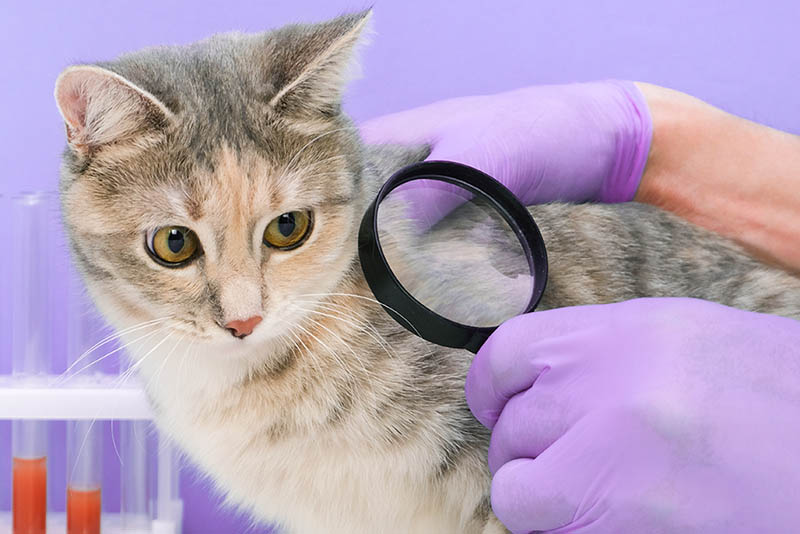
10. At $207,454 annually, a Locum Tenens relief veterinarian position earns the most money among vets
(ZipRecruiter)
The best-paying job in the veterinary field is that of a Locum Tenens relief veterinarian. They are experienced vets who can come in and relieve other vets for short and long-term periods. For example, if a female vet has a baby, she will hire a Locum Tenens relief veterinarian to take care of her practice while she recuperates and attends to her newborn. Locum Tenens relief veterinarians earn approximately $207,454 per year, about 99.74 per hour.
11. In 2019, 82% of all vet students took out student loans.
(Nerd Wallet)
Due to the high cost of veterinary programs and the low number of high-paying school funding options available, 82% of 2019’s veterinarian students turned to student loans. Other funding options include grants, scholarships, and digging into existing savings or bonds.
12. Most vet school graduates pay off their student loans in 20 to 25 years.
(dvm360)
According to Tony Bartels, DVM, MBA, and a consultant for the Veterinary Information Network, it will take the average veterinary school graduate between 20 and 25 years to pay back student loans. Of course, the more income a vet makes, the shorter the time it may take to pay off their loans. Mr. Bartels recommends taking out income-driven repayment loans to pay your vet school loans back faster.
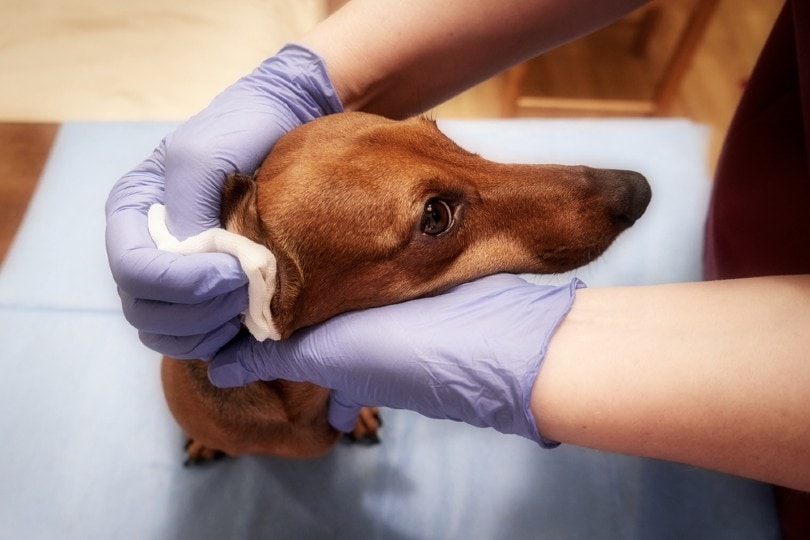
 Schooling
Schooling
13. In 2021, 10,834 qualified applications were received by US vet schools
(AAVMC)
The US vet schools received nearly 11,000 qualified applications during the 2021-2022 admissions cycle, according to the American Association of Veterinary Medical Colleges. That number represents a 5% increase over the previous admissions cycle. (AAVMC). According to the AAVMC, record numbers of applicants apply to vet schools across the US.
14. In 2021, vet school applicants applied to an average of 5.37 vet schools.
(AAVMC)
With 32 veterinary schools in the US, there are certainly plenty of choices for qualified veterinary school applicants. During the 2021-2022 admissions cycle, the average number of applications sent out was 5.37.
15. To become a veterinarian, an average of 8–10 years of higher education is required.
(Cost Evaluation)
It can cost an average of 8–10 years of higher education to become a vet in the US. This includes the years spent pursuing an undergraduate degree, veterinary doctorate, and residency programs. Some students may choose to pursue additional schooling outside of the basic requirements as well.
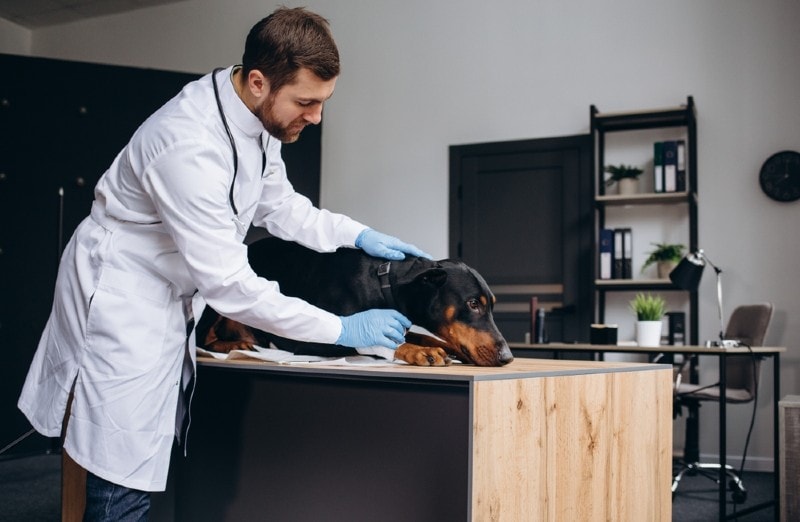
16. Approximately 50% of all people who apply to vet school are accepted.
(AAVMC)
There is a myth that it is more difficult to get into a vet program than it is to get into a human medicine program, and this is rooted in there only being 32 veterinary programs in the US and the assumption that the limited number of programs and available seats mean that most people won’t make it in.
While it is recommended to apply to multiple programs to increase the likelihood of being accepted into a program, around 50% of all applicants are accepted into a program.
17. Every year, approximately 3,200 people graduate from veterinary programs in the US.
(AAVMC)
Approximately 3,200 people in the US graduate with a doctorate in veterinary medicine annually. However, there is still a significant shortage of veterinarians in some areas. This shortage is largely concentrated in rural areas, but the severity of the shortage varies significantly by state.
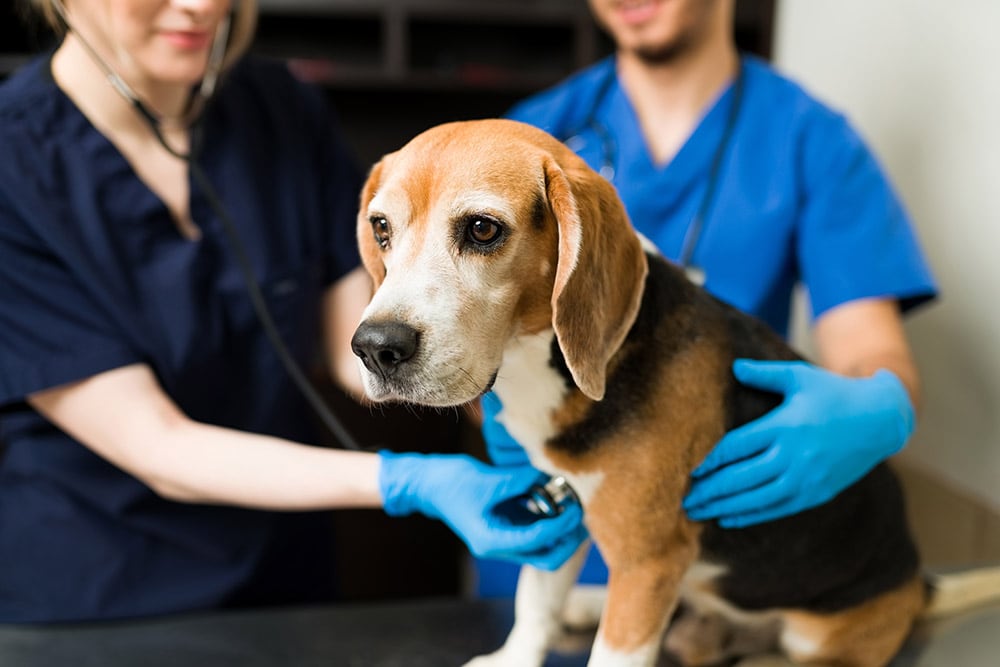
Frequently Asked Questions About Vet School
Is a specific undergraduate degree required to get into vet school?
No, there is not a specific undergraduate degree required to get accepted into a vet school program. There are specific requirements pertaining to sciences and math, as well as certain GPA requirements, which may vary by school. (AAVMC)
Are there required programs after vet school?
There are not any required programs post vet school, but specialty veterinarians typically need multiple years of residency and internship experience. Some specialties may also benefit from research experience before fully entering their specialty.
Is animal care experience required to get into vet school?
Working in animal care before applying for vet school may give an applicant a leg-up on other applicants. Many vet schools require applicants to have animal care experience, though, with most of them requiring around 400–500 hours of hands-on experience at minimum. Experience related to the type of veterinary medicine an applicant wants to go into is ideal. (Cost Evaluation)
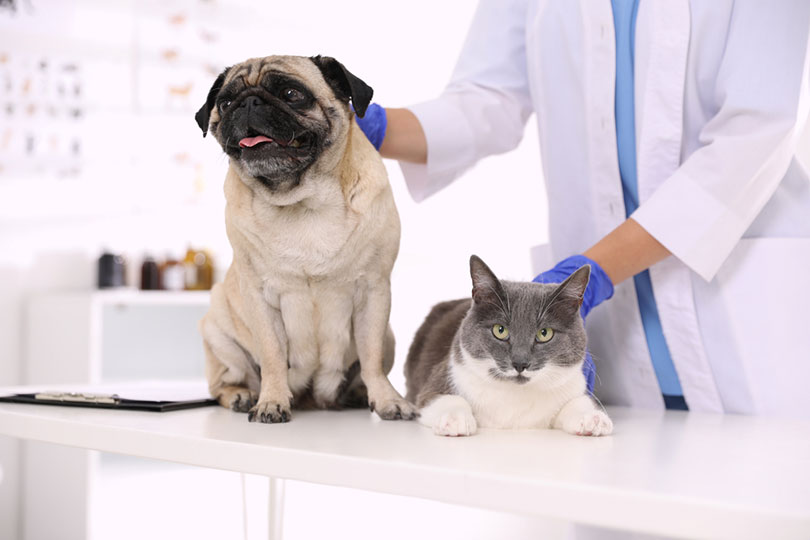
Can vet school be done online?
No accredited veterinary programs are currently offered with an online-only option. Some types of schooling, like veterinary technician programs, may be able to be done fully online or online with an internship working under a veterinarian. To become a vet, schooling must be done in person and requires hands-on labs and training.
Are more spots becoming available in veterinary programs?
Yes, but only slightly. In the last 30 years, class sizes in veterinary programs have increased by 2% every year. This means that you can expect at least one or two new spots to become available in most programs. (AAVMC)
Which state has the most veterinarians?
California has the highest number of veterinarians, with 7,380 vets being employed within the state in 2021. The second highest number of veterinarians is in Texas, but California has 65% more vets than Texas does. As you may have guessed, Washington D.C. has the least number of vets, with only 90 vets in the district in 2021. (Business.org)
Is it true that veterinarians have a high rate of suicide?
Unfortunately, yes. This is part of the ugly truth of being a veterinarian. This career can cause extremely high levels of stress related to multiple factors, including dealing with life-and-death situations, difficult animals and people, and high rates of debt. It’s extremely important for vets to take care of themselves, and it’s also extremely important for clients to treat veterinarians and staff with respect, kindness, and understanding. (CDC)
Conclusion
Becoming a veterinarian requires a major commitment of time to school, studies, labs, residencies and internships, and hands-on experience. On top of the time commitment, you can expect to spend upwards of $100,000–$200,000 to get through vet school, and that doesn’t include the cost of achieving an undergraduate degree. The time, money, and difficulty of schooling mean that vet school isn’t for everyone.
Being a vet can be an extremely rewarding career, but it’s also a very challenging career that often causes people to neglect their own mental and physical health, as well as relationships with family and friends. Becoming a vet requires a commitment to caring for yourself and knowing your own limits.
Featured Image Credit: Elnur, Shutterstock

